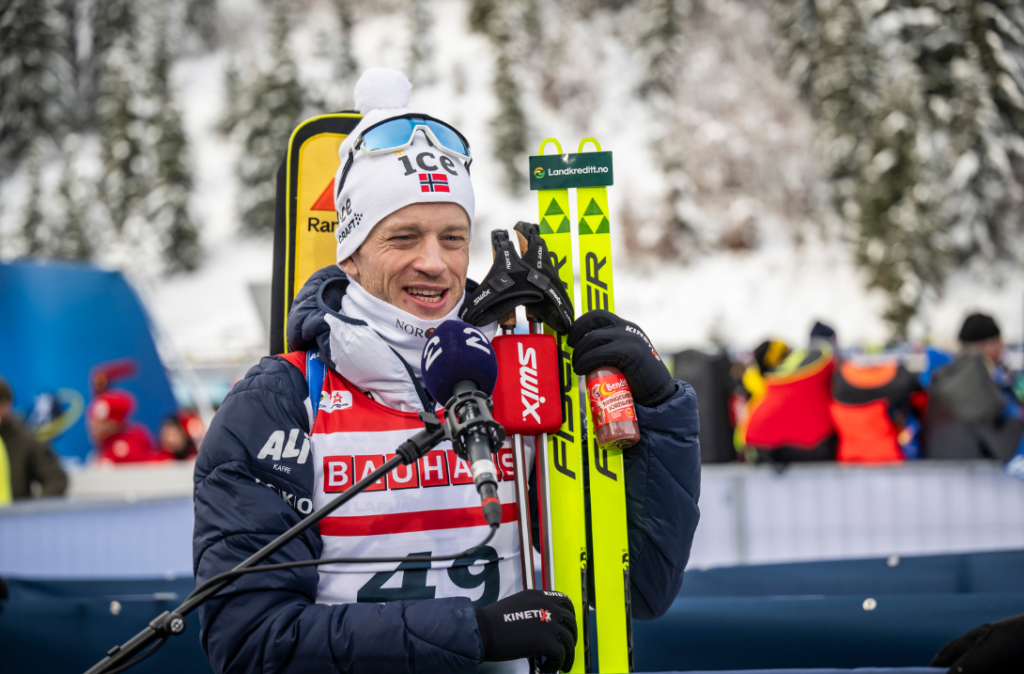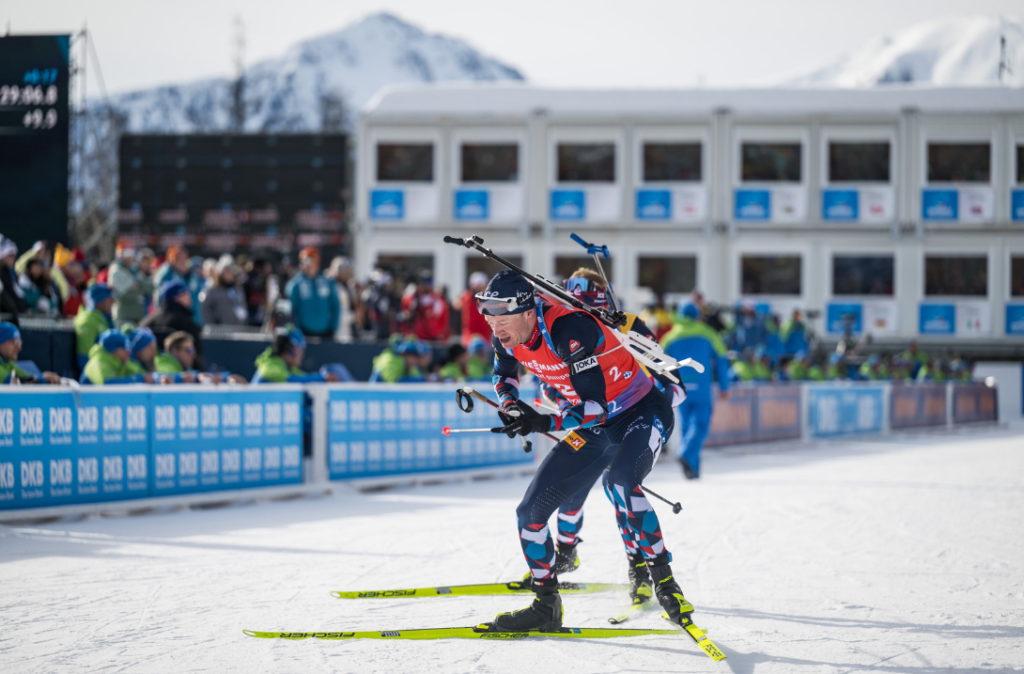Yes, biathlon is older than television - much older in fact. When the first biathlon club is said to have been founded in Trysil, Norway, in 1861, you had to climb hills to be able to "watch TV".
But when the pictures later learned to walk, there was biathlon. But only marginally! Because competition was fierce, especially in the German-speaking market, even in winter: King soccer, alpine skiing, ski jumping, figure skating, these sports were in the spotlight. Others had a harder time, due to technical requirements, audience interest and the rules. This TV example is unimaginable today: in the men's 15 km cross-country race with individual starts every 30 seconds, there was one camera at the start, two or three stationary cameras in the forest and, of course, the camera at the finish. That was it. This occasionally led to the creation of legends, for example when ZDF commentator Bruno Morawetz was looking for the young Jochen Behle at the 1980 Olympic Games in Lake Placid, who had run with the best in the world in the meantime, but never made it into the picture. "Where's Behle?" has been a common phrase in cross-country skiing ever since. In other countries, this race is remembered above all because the eventual Olympic champion Thomas Wassberg from Sweden and the Finn Juha Mieto fought a long-distance duel, which Wassberg won by a hundredth of a second. However, the incredible drama of this decision was actually only conveyed by the intermediate times shown.
The situation was similar in the biathlon. The shooting was followed by a camera placed on a pedestal behind the stand. Otherwise, the athletes ran through the snowy forests, occasionally captured by a cameraman. There was a long course over 20 km, plus the so-called sprint over half the distance and a relay race. These rules were considered set in stone and when the women discovered the sport for themselves, they completed their competitions according to the same pattern, only the distances were slightly shorter. Nevertheless, the biathlon scene had its stars, Viktor Tikhonov from the USSR, Frank Ullrich from Thuringia and the Bavarian Peter Angerer, to name just three.
The 1993 Biathlon World Championships in Borowetz, Bulgaria, represented something of a turning point. Inexperienced and sometimes overtaxed directors and cameramen sometimes missed the winners or provided images in which no athletes could be seen at all. Telegenic sport, at any rate, was agreed to be different.
In the summer of the same year, the Biathlon World Federation was founded. It set out with the aim of reorganizing the sport, which previously operated under the umbrella of modern pentathlon. One man in particular promoted the innovations: Janez Vodicar. The professor from Ljubljana, sports director of the new world federation, pushed ahead with professionalization together with the general secretary of the federation, Peter Bayer from Germany. He not only changed the rules, but also the framework conditions, radically transforming the sport.

Anyone who wanted to hold World Cup races from then on had to comply with certain conditions. Larger shooting ranges, for example, with 30 shooting lanes to enable mass start races. And television was now also technically capable of broadcasting the shooting events perfectly. Picture-in-picture technology made it possible to show athletes performing their exercises on the one hand, and to show the targets simultaneously with another camera on the other. This increased the excitement. New competitions were established, such as sprint and pursuit, and experiments were carried out and copied from other sports. The mass start became established and the length of the competition was controlled in such a way that competitions only lasted longer than a soccer match in exceptional cases. Science was used to avoid mistakes and television was used as a transformation belt to boost popularity. This in turn led to increased interest from sponsors - creating a cycle that can be described as a win-win situation.
But the sport was also lucky. Because in the most important European television market of all places, the viewing figures shot through the roof. In these times of change, Germany had several top athletes who caused a sensation and became crowd favorites. In addition, with Ruhpolding and Oberhof, the country had and still has two locations that meet the highest standards. And as a final clever move, the new world federation awarded the advertising rights to an internationally renowned agency and at the same time stipulated that they had to be shown on free-to-air television and not disappear behind paywalls.
Since then, the sport has run like clockwork and has been a TV ratings guarantor in Germany for two decades, even ahead of ski jumping and alpine skiing. Many things have changed since then, the internet has gained in importance, social media channels accompany the sport and the athletes themselves appear as broadcasters. Nevertheless, linear television (still) remains the measure of all things in terms of popularity. The perfection of broadcasts continues to be refined, super slow motion, the use of drones, micro-cameras, 3D graphics - there seems to be no limit. And the world federation also lives cooperation for mutual benefit, refining and specifying its rules, coordinating start times, creating new and changing less successful formats. Unimaginable 30 years ago! But: the public has become more demanding, so there can be no going back. Even if - and this is also part of the truth - sophisticated productions are not cheap. However, success has proved all decision-makers right for years. Especially on the German market.
Fotos: K.Voigt Fotografie

